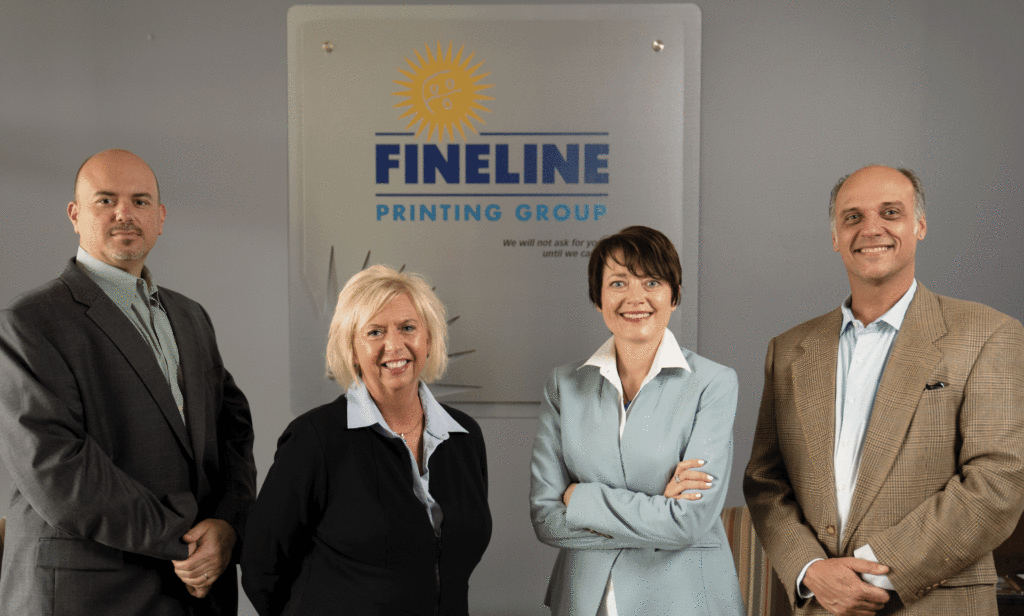Fineline’s Commitment to Digital Print Workflows and Improving the Client Experience

Our Commitment to Clients
Our customers are at the core of our business. We live by the phrase “we will not ask for your business until we can improve it.” To that end, we are always looking for ways to improve our customer experience. With 42 years in the printing industry—yes, we existed before the internet!—we’ve seen tremendous changes. While other printing companies were forced to shut their doors or sold to outsourced print management firms, our core value of “always learning” has allowed us to transform and adapt over the years from the days of paper and film, to computer driven desktop publishing, to digital printing and QR codes and securely printed mailers with sensitive variable data to thousands of individuals.
Fineline is embarking on a new digital transformation initiative to take the next step with our processes into the digital age. While the words “digital transformation” may sound like we are taking human interaction out of the process, we assure you that our Account Managers will continue to work with customers to develop strong relationships and provide value that makes a difference. In fact, efficiencies in our processes will give us even more time to focus on client relations and our consultative approach to printing.
Commitment to Digital Transformation
 As part of our commitment to rolling out digital workflows for our customers in the coming months, Fineline has promoted our Director of Technical Solutions, Matt Arent, to Chief Technology Officer to oversee the effort. We have also hired several new remote account managers to better serve our clients across the U.S. and IT Developers to ensure the success of the new digital workflows.
As part of our commitment to rolling out digital workflows for our customers in the coming months, Fineline has promoted our Director of Technical Solutions, Matt Arent, to Chief Technology Officer to oversee the effort. We have also hired several new remote account managers to better serve our clients across the U.S. and IT Developers to ensure the success of the new digital workflows.
“Fineline is already known for being easy to work with, and our new customer portal and collaborative proofing environment will allow us to serve our customers and internal teams even better,” Arent stated. Arent continued by saying that the company has committed to being at the forefront of digital technology in their business sector for years to come.
What Do We Mean by Digital Workflows?
A workflow comprises a series of activities required to complete a task. Traditionally, a print project workflow includes a number of steps accomplished over the phone, via email, websites, and secure FTP servers. There can be a lot of back and forth to ensure the results are what clients expect. And keeping track of all the back and forth can be time-consuming for all involved. A digital workflow can control the flow of projects and provide one source for all tasks.
Benefits of Enhanced Digital Print Workflows
Here are some of the top benefits our customers will gain with improved digital workflows at Fineline.
- Quicker turnaround times.
Print quotes, approvals and job delivery are quicker and more efficient with digital workflows. This means you get your print projects to market faster so customers can improve their customers’ experience.
- Simplifies the process.
Using a single place to upload jobs, review, and approve or reject proofs, digital workflows make the customer portion of the printing process simplified and seamless. Fewer communication barriers mean it’s simpler for Fineline and customers alike.
- Increases customer control over print projects.
Increased visibility into projects and metrics gives customers more control over their printing.
- Work anywhere, anytime.
With digital workflows, you don’t have to worry about staying up late or getting up early to communicate with your print provider.
As Fineline continues to evolve with technology, we remain focused on sustainability of renewable resources, protecting client data, and being an innovative company that continues to be customer centric. As one valued client said, “Fineline is “right-sized!” They are big enough to produce nearly any job but small enough to be nimble and flexible to the ever-changing needs and requests of their clients. And we intend to keep it that way.
